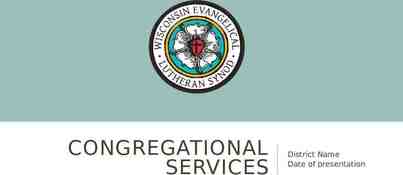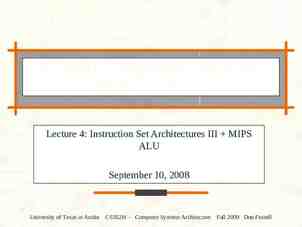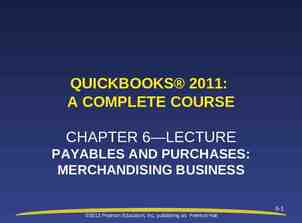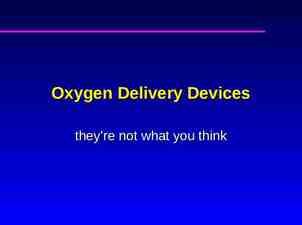PMPD Presentation on Value Engineering E&PM April 26, 2022 1
20 Slides6.24 MB

PMPD Presentation on Value Engineering E&PM April 26, 2022 1

Let’s Get Started! OK – right out of the gate: We are behind schedule and over budget! Sound familiar? This is not where Value Engineering should begin! Take the time early in the project to understand the goals/expectations and the budget. Was this a placeholder budget and schedule that needs to be updated? From the time of the feasibility study, were the costs escalated to the projected construction mid-point? 6

Value Engineering Definitions: Value Engineering as a function-oriented, systematic, team approach to provide value in a product, system, or service. (The Society of American Value Engineers International) Value Engineering is a conscious and explicit set of disciplined procedures designed to seek out optimum value for both initial and long-term investment. (National Institute for Building Sciences) Value Engineering can be defined as an organized effort directed at analyzing designed building features, systems, equipment, and material selections for the purpose of achieving essential functions at the lowest life cycle cost consistent with required performance, quality, reliability, and safety. (U.S. General Services Administration) Value Engineering can have a positive outcome for all stakeholders (architects, designers, building-product manufacturers) when everyone embraces and actively participates in the value analysis. Creativity can be used in many ways to meet the overall goal. This process is used to solve problems, identify, and eliminate unwanted costs and improve function and quality. The set of disciplined steps in the value engineering process is meant to optimize initial and long-term investment, seeking the best possible value for the lowest cost. 6

Beginning of Value Engineering - History Created in a Crises: World War II: Lawrence Miles with GE was responsible for purchasing raw materials and experienced extreme material shortages. He searched for suitable alternatives that functioned similarly. Found some substitutions that were more cost-effective AND performed better. This new technique called “value analysis” is more commonly known today as value engineering. PMs Typically Uses VE in a “Crises” – Project Budget Crises: Structured VE process often conducted when a project estimate or bid is significantly over (no additional funds available) Similar principals are applied during the study & design of any project. GSA and other entities conduct VE processes as a matter of course. 6

FCS Stewardship Responsibility Part of Our PM Role: Facilitate a project to meet goals / expectations - while being mindful of the overall budget, longevity, sustainability, maintainability, etc. 6

Design versus Value Engineering We are Making “Value Engineering Like” Decisions All the Time: Feasibility or Space Study - explores multiple strategies , pros/cons, associated costs. Ultimately a preferred direction is stood up as the project. Team evaluates effective solutions for the budget. Pre-Schematic Design or Concept Phase – looks at multiple solutions (Often 3) to determine best path forward. (Meeting criteria, life-cyclecost, budget, sustainability, working with constraints, etc.) Design Process – the Design and Stakeholder Team subject matter expert’s review options during mtgs & Design Milestones. What is the appropriate roof or mechanical system, lab casework, or floor finish for the project? Not done in a vacuum without understanding life cycle cost, energy performance, durability, and program/performance, etc. Checking Scope back to key project goals/requirements and what is necessary versus nice to have. What moves forward in design, as an add alternate, or parked until we have a better handle on budget. 6

Value Engineering – When to Conduct Best Times to conduct VE study: 1. Completion of Concept Design (Pre-Schematic, Feasibility Study) 2. Completion of Design Development VE Study to identify and evaluate changes (Or options) that could result in increased functional value (including stakeholder satisfaction) in the completed facility while reducing construction or operation and maintenance costs. This effort should be scaled to the project size, complexity, and status. Worst Times: 3. Conclusion of Construction Documents 4. During or after Bidding, requiring bid-addendum, etc. 6

Value Engineering – Why Earlier is Better Concentrating value engineering efforts in the early stages of project design affords greater savings and allows a change of direction, if appropriate, without affecting project schedule. (Emphasis on max. life cycle value) 6

Value Engineering – Early (Group Collaborating) 6

Value Engineering – Late (N0 – Still Need Collaboration) 6

What Value Engineering is Not Not compromised safety, building code, health and well-being of people Not a knee-jerk reaction to avoid going over budget. Maximize function at the lowest possible cost. Not reducing quality and increasing operational costs. (Not over-paying for quality when an equally effective, less expensive option exists) 6

Methodology: Step 1: Information Gathering Phase Collect data and get a clear understanding of the project. (Milestone when owner requirements, drawings, specifications, cost estimate, etc. are available to fully understand project) Step 2: Function Analysis Phase Analyze the functions of the elements identified in the previous step and evaluate their necessity to the goals of the project. Primary Functions – vital to the existence of the final product/project Secondary Functions – notable but not critical to the core of the project 6

Methodology: Step 3: Creative (Speculation) Phase Develop alternative solutions for delivering necessary building functions. The value engineering team brainstorms to generate potential design solutions to reach the project functions. Focus on the big-ticket items that have the most opportunity to deliver value. All viable options are outlined at this step. Next, designers and their team will eliminate the “weak plays” to present only the strongest options in Step 4. 6

Methodology: Step 4: Evaluation Phase Assess the alternative solutions. Subject matter experts evaluate and question the available options and weigh them against each other. How well can each alternative perform the function of the original solution? Owner expectations also matter and must be discussed. Holistic evaluation of each choice since a change in one area of a facility can affect any or all other areas of a facility. Step 5: Cost Analysis Allocate costs to the alternative solutions (First cost and over facility’s life cycle) 6

Methodology: Step 6: Development Phase Team assembles all recommendations, their advantages, disadvantages and implements plans to present to the project stakeholders. Decisions are made on which VE options to incorporate into the documents. Deciders typically involve core project team and SME’s based on VE scope. Some ideas may allow them to be incorporated as a bid alternate. (Either an alternative product or distinct scope that could be added or removed depending on bid results or if alternative funding becoming available, etc.). Post-bid addendum can also be used when bids come in high, but less effective and delays project award. 6

Spreadsheet: VE Description Accepted 0 One larger AHU versus two smaller AHUs 0 MRL Elevator versus Traction Pending Rejected Potential Impact Secondary Function Design Standards Life Cycle Cost Sustainability/Energy Aesthetics ALT # VE # 1 2 Date: SD/DD/CD/CA All Values are Trade Costs Subtotals: *Composite Markups: 0 0 0 0 0 0 0 0 0 0 0 0 0 0 0 0 0 0 100,000 0 0 0 0 0 0 0 0 0 0 0 0 0 0 0 100,000 26,000 0 75,000 0 0 0 0 0 0 0 0 0 0 0 0 0 0 75,000 19,500 No Impact Neg. Impact VE Savings to Date 0 126,000 94,500 Positive Impact Notes Longer duct runs and less effecienct at lower demand loads First cost savings w/ higher maintenance, lower penthouse *Composite Markups: General Conditions, Overhead & Profit, Design Continency, Bid Contingency, Escalation (to Mid-Point) - edit for specific project Sign-Off Complete - approval documented from appropriate stakeholder(s) - FE, FM, E&S, Dept./College/Unit, etc. (Depending on the VE item scope and potential impact on maintenance, program, etc.) Consider creating a tab for VE at each project phase. Primary Function: vital to the existance of final project. Secondary Functions: notable but not critical to the core of the project. Group VE items in Uniformat II when having an extensive list to evaluate SME Approval Phase: Primary Function Project: ABC Project FE E&S N/A

Primary Function: vital to the existence of final project. Secondary Function: notable but not critical to the core of the project.

Long VE lists – group around Uniformat II .

VE Examples

PMPD Presentation on Value Engineering Questions? E&PM April 26, 2022 20






